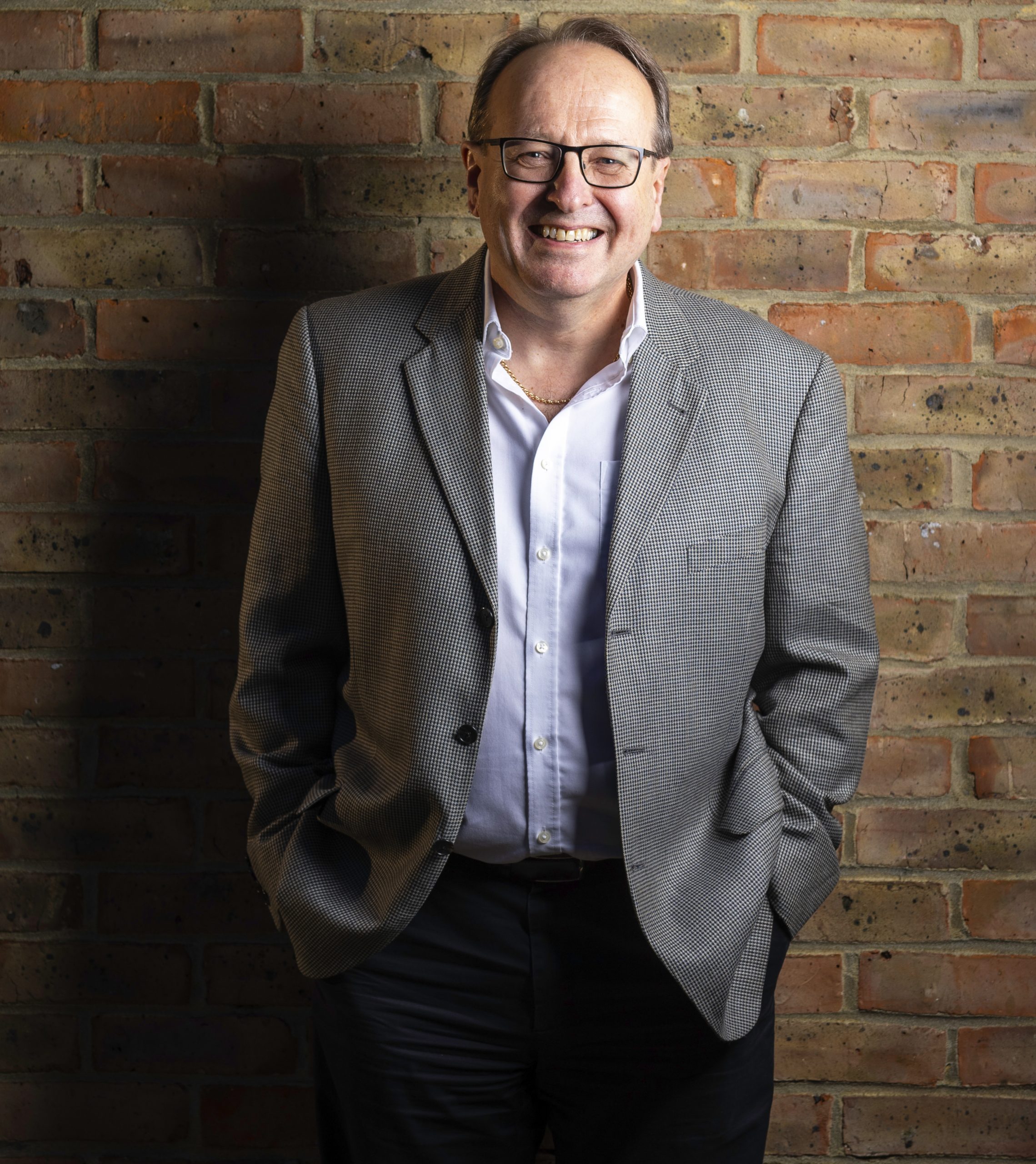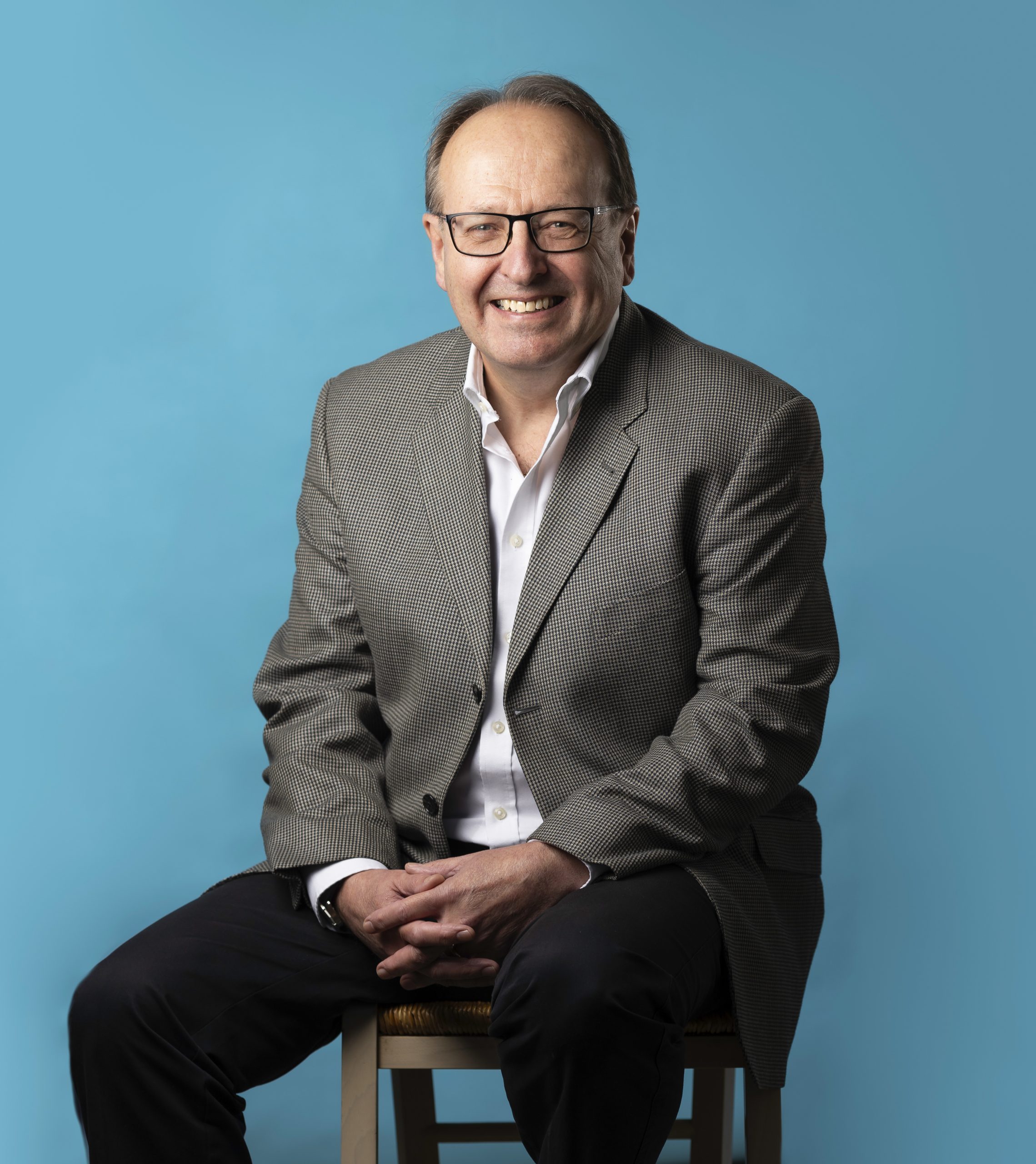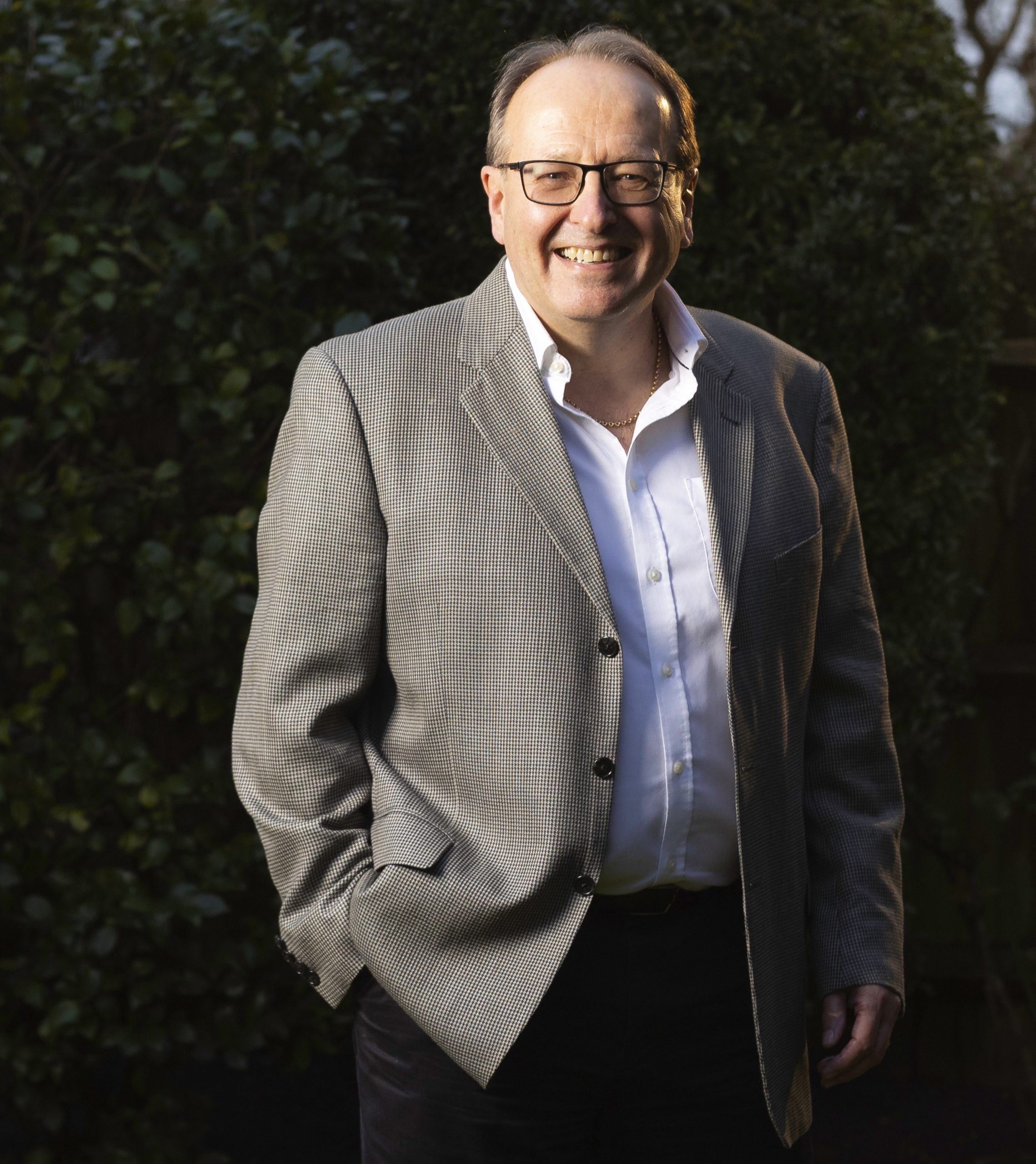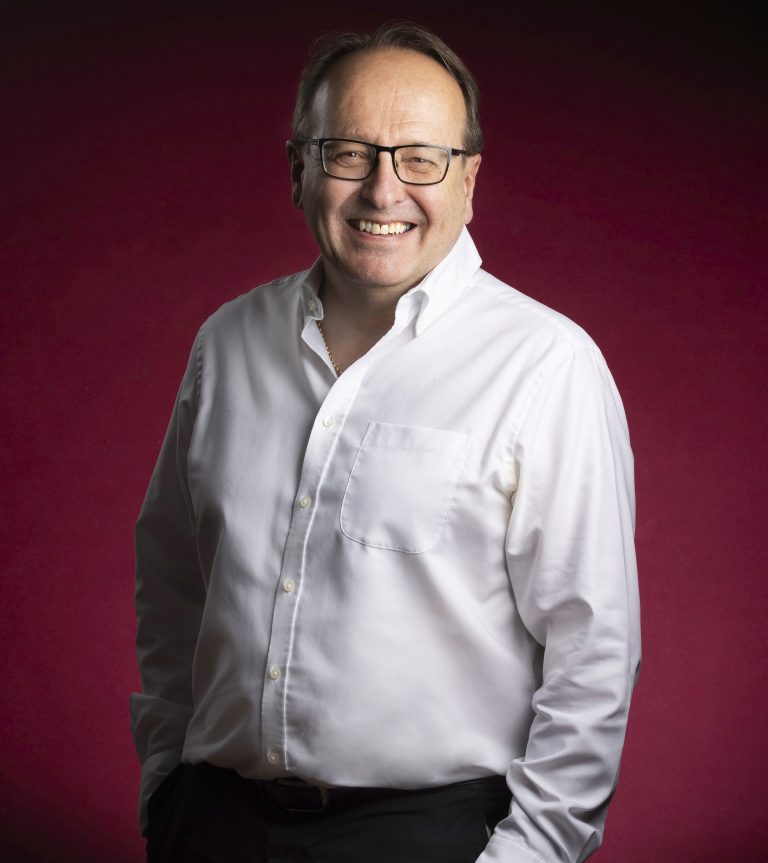Steve, take us back to your early life and how you found the path to a career in HR.
I started studying accountancy at Liverpool University, but I quickly realised it wasn’t for me and switched to a broad-based economics course and loved it. I fell into HR by chance, as the course included electives on employee relations, the labour market and employment law. I was really drawn to this and I then had a summer job working in the NHS, in the personnel department. So, in a somewhat convoluted way, I happened across my real area of interest, particularly the whole labour relations environment. I graduated in 1977 and it was a time when industrial relations in Britain could best be described as challenging and, although the bitter arguments and strikes did little for output and productivity, they did forge new approaches that would shape the future world of work. It also pitched personnel well and truly in the heat of the action. There’s a saying that management gets the industrial relations it deserves and unfortunately that was all-too often true. If you fail to engage and involve workers and build strong partnerships with unions, disruption through deteriorating relations is inevitable. For example, contrast the performance of car manufacturers at the time – Toyota was revolutionising engagement and performance, while Leyland was paralysed. Making real change through engagement and involvement became my real focus and inspiration. Having graduated, I decided to do a course in HR at the London School of Economics. The course was run by social scientist and prominent politician Baroness Seear, who was incredibly well connected and attracted some amazing speakers into LSE. During my studies, I spent time at Laing’s construction company, British Airways and British Aerospace and, on leaving, I decided to look for opportunities in manufacturing. My first role was at a Dunlop factory in Essex, where – and this dates it beautifully – they made wooden tennis rackets. However, unbeknown to me, they were planning to take manufacturing offshore while moving to use modern materials, such as carbon fibre. So, a few months after I started there, they announced the closure of the factory. This was unbelievably traumatic for people, many of whom had been there for their whole working lives. This was an important piece of learning for me, which is not to deliver such news out of the blue – you have to consult from the beginning, rather than deliver this kind of news as a shock.

The 1970s was such a disruptive time in the world of work and business. There was much change and a mindset and culture to rebel against it.
In my final weeks at Dunlop, I moved from an increasingly important HR role in the business to closing the factory, running a job centre and counselling people on their redundancy and retirement options. We closed the gates and I looked for my next role, which was with Lesney, the Matchbox toymaker, based in East London where I lived at the time. In the first 18 months, I had four different roles; looking after the transport department, the toolrooms and two of their factories. It really was learning on the go from an industrial relations standpoint. The relationship between the company and employees was not great. Lesney had the foundry on one site, plastic moulding at another factory and a further facility for assembling product. They had drivers moving the parts between these factories as well as taking employees to work in a fleet of former London Transport buses. So, transportation around the area was critical to production and the transport team was pretty powerful. I hadn’t been there very long when one of the depots went on strike. My manager and I drove over there and he said: “By the way, I want you to chair this meeting.” Once there, surrounded by them all, I sat on my hands because they were shaking so much as I was scared stiff. But I came away thinking I made a positive impact and that was confirmed by encouraging comments from my boss on the return drive. My reward was a move to managing HR for the toolrooms, which were notoriously tough environments. I really earned my HR stripes there and began to consider what I wanted to do next.

Tell us about your next career move.
I joined telecoms company, ITT, just as the sector entered a memorable era, following the privatisation of British Telecom. What at first sight looked like a cozy, comfortable and profitable operation at ITT, suddenly became extremely challenging. Amid tense negotiations with unions, restructure followed restructure and for the first time in my career, I felt I was beginning to burn out. So, when I received a call from a head-hunter about a role at Coca Cola, I jumped at it. I didn’t land the job I went for but, but instead entered the world of compensation and benefits. Once again, I came into a business where big changes were afoot and, about six months into my tenure, Coca Cola announced a major merger with Schweppes. I was seconded to the team charged with trying to make it happen and we set about identifying commonalities and synergies between two largely incompatible organisations – both giants in the same market – but with huge differences in culture. At times, it could have been described as a bit of a bloodbath! The merger didn’t succeed and it was a bruising time, but fantastic learning around organisational development, stakeholder engagement and change management.

It seems that you were forging a career in a particularly disruptive corporate time, did it blow you off course at all?
Crisis and challenge really boosts your experience set and with an increasingly attractive CV, I was able to take up an opportunity which came along, that took me to the Berkshire base of US conglomerate, Honeywell. I joined as Compensation and Benefits Manager, but just after I arrived, the UK HR Manager left and I was asked to cover both roles. This was the beginning of what turned out to be a 20-year spell with the company, initially based in the UK, then the States. I had no fewer than 11 roles, including sideways moves and promotions, with the longest as HR Director for the Northern Europe and Southern Africa region. At this time, the computer piece had been sold off and the big focus was automation and control. Honeywell was a global name and highly regarded for its technology, but really underperformed financially, so became attractive to buyers. After a bid from another US giant, General Electric, was blocked by the EU due to concerns about competition, Honeywell was bought by aerospace, automotive and engineering company Allied Signal. Right after that acquisition, I was asked to oversee the creation of a new organisation for Automation and Control in Minneapolis, where I spent four wonderful years. After about a year on that project, I went back to a more mainstream HR role and eventually became Vice President of HR for the Environmental Controls business. This was my all-time favourite job at Honeywell, it was a great business and I was surrounded by a fantastic team in a truly global role. When I finally left Honeywell, I remember that for the first time in my career, I had the space and time to really ask myself, “what next”?
Coming from a very global and corporate role, tell us why you chose to join the charity St John Ambulance?
You can’t say this without it sounding clichéd, but I thought it was time to give back. I looked at various opportunities in the charity sector, but I felt drawn towards St John Ambulance. My father was a doctor and my mother a nurse and I grew up with real respect for St John. I wish my parents had lived to see me working as its HR Director. When I joined in 2010, the charity was about to embark on a substantial and radical reorganisation. It was run as more than 40, semi-autonomous county organisations and the objective was to move to consolidate, build a more corporate type of structure and put our finances in order. I spent the next two years leading that effort and it was tough. People were understandably proud and staunchly protective of their positions, but we found a way through in the end.
You can perfectly see why the individual county bodies were so against change, they had been left to their own devices for years.
Yes, many people were well connected and held positions of power and among the many pockets of local ownership, there was a general mistrust of national headquarters, which I could understand. So, there was always pressure, close scrutiny and the necessity to justify every step of the transformation. But it’s important to remember that the critical reason for change at the charity was because its financial performance had been very poor and that was a reality that I could focus minds on, but I needed to gain their trust. If you fail to win confidences, you will come unstuck very quickly and you can find yourself second guessing reactions and motives, which can really bog you down. The answer is to keep communicating the reasons behind the change, what the change will mean to the people and the improvements that it will bring. Of course, it can be really disheartening when people don’t agree with you, that makes a strong headwind – nobody could truthfully tell you otherwise – but if you are consistent, you eventually move in the desired direction of travel. One strategy we adopted was to identify people who supported the changes to modernise the charity and encourage them to be our champions in the field. This proved very effective and grew to be a network of champions, promoting what we were doing at every step of the way. We spent months on the road engaging with people and setting out how this change would secure the future of St John. Once the charity’s Board had given the plans the seal of approval, I had the green light to then work with volunteers, to design the new organisation.
What were the key foundations for the new organisation going forward?
This is a 900-year-old charity and St John people wanted to preserve the legacy rather than bury it beneath some future vision. We began with a standard organisation structure, which was to be replicated in each of eight different regional organisations, making connection with the centre easier. We had to bring in the changes gradually and functions, such as finance, were examples where complete change could happen at once, but for the more operational areas, connectivity to the centre was new territory. This created some grey areas at first, but we would never have been able to progress if we had flicked a switch to change everything overnight. We had to consider carefully, what should our organisation focus on and what are our core objectives? At the time, we were involved in many disparate activities, such as running minibus services in rural communities and, in some regions, we were running ambulance services excellently, but in other areas we were not operating any. So, to progress and perform well, we had to focus on core activities, balancing our revenue generating operations with the need to support the voluntary activities we were best known for, such as providing first aid cover at public events. Inevitably, there was pockets of opposition to the dropping of some services and the promotion of others, but we stuck to the plan, to good effect.
There are critics to centralised control and there has been a move to localise is recent times, but I guess it really does depend on each organisation.
Agreed and importantly too, it very much depends on the degree of control. Although we had more than 40 separate entities, we did not reduce to one, we consolidated to eight regions, in which the management was embedded locally. Clearly, a rigid control regime is out of step with the general ethos of volunteering organisations and so it comes down to a balance of control and autonomy. It’s important that people don’t lose their sandbox, that area where local leaders can exercise their creativity and initiative. I think we have found that balance and the engagement results are positive, as are the business results, prior to the pandemic. Also, customer satisfaction has improved and regulatory compliance is much better and, very importantly, the synergy between volunteers and employees has improved, as has the experience of both. It’s been a challenging ten years, but the improvements have been worth it.
Tell us about how St John has managed during the pandemic.
It’s been a tough time, as it has been for everyone. From a business point of view, St John is the market leader in workplace training – 250,000 people a year – but of course, this activity stopped overnight in the first lockdown and has operated at a much-reduced level since then. However, while face-to-face training was not an option, we adapted by investing in digital technology, to offer some online modules for free, to enable key workers from wide range of sectors to refresh vital first aid skills, from nursery workers and school teachers, to those in factories and construction. At the same time, we continued to play a major role in supporting the NHS by training thousands of first aiders up to help its frontline staff fight COVID-19 on ambulances, in hospitals and in community settings. Now we are carrying out our biggest peacetime operation, where we’re training more than 30,000 volunteers to assist with the vaccination programme. Our first volunteers began vaccinating and caring for those being vaccinated on January 11th. To achieve such a feat, we’ve worked closely with NHS England and other partners and rapidly adapted our systems and training at pace and scale.
How would you summarise the preparedness and determination of St John leadership for the journey ahead?
Without doubt, our Chief Executive, Martin Houghton-Brown, typifies our spirit. He’s an incredibly energetic guy who’s unfailingly positive, has great ideas and compelling passion. He regularly volunteers as a first aider himself, so he’s very much in touch with the grass roots of the organisation. Martin really has changed the vibe of the organisation. If some people had felt that the charity was becoming a little too business-like, he has re-balanced this by emphasising the importance of volunteering. I think Martin’s presence since 2018 – and the team of incredible leaders around him – have made volunteers feel truly valued and part of a big team.
There must be a fragile balance in how you manage volunteers and salaried staff.
It can be a difficult balance, but I think one of the key changes we have brought in has been improved consultation, which has led to greater empathy and understanding across functions. Many of our volunteers have years of experience and are experts in their field, so they are a critical friend in terms of helping the charity improve. Rather than coming up with a proposal and then consulting, we’ve turned the tables and provided the platform for people to contribute. That way, we make better decisions, the implementation becomes easier and the amount of re-work reduces. Sometimes it is tough to maintain momentum – particularly when you have had redundancies, as we have recently – but the organisation is more effective as a result.
Are you concerned that COVID-19 will negatively impact on that very human act of helping others?
The good news is that when somebody is in need, people still go and help, despite these extraordinarily difficult circumstances. We teach CPR differently – no rescue breaths, just the compressions – but our clinically trained volunteers are still stepping forward to save lives in their thousands and there’s no sign of that abating. Equally encouraging, new people are still coming forward to join us, for instance to help with the vaccination programme. Of course, they are fully trained and equipped with PPE.
How has the organisation had to adapt to the realities of this pandemic?
To quote Dickens: “It was the best of times, it was the worst of times.” The worst was during the first lockdown when our income-generating activities came to a halt. Not only did our workplace first aid training have to stop, but public events, from sports matches to pop festivals were cancelled, meaning we were no longer required to provide the first aid cover for which our volunteers are best known. Our finances looked daunting, we had 700 people on furlough and had to make tough decisions, including making 200 people redundant. The best of times has been our phenomenal support to the NHS. Under the direction of our Chief Operating Officer, Richard Lee – also a paramedic and volunteer – we rapidly developed new volunteering work streams to support hospitals, including the Nightingales, community services and to grow our ambulance services so we could provide hundreds of thousands of hours of patient facing care. Richard was recently awarded the MBE for his services during the pandemic and St John has gained from having the chance to show how we can respond to a health emergency of this magnitude. We’re confident we’ll benefit from more people joining us, more people donating and a strengthened partnership with the NHS, so there are some silver linings. Of course, not only are we helping fight COVID-19 now, but when the pandemic is finally under control, our communities up and down the country will benefit from having thousands more first aid-trained people among them, ready to respond. This pandemic has been terrible, of course, but it has forced us all to really think about who we are, what we do and how we operate. It’s also shone a renewed light on the importance of empathy, understanding and support which, as leaders of people, we understand very well.










